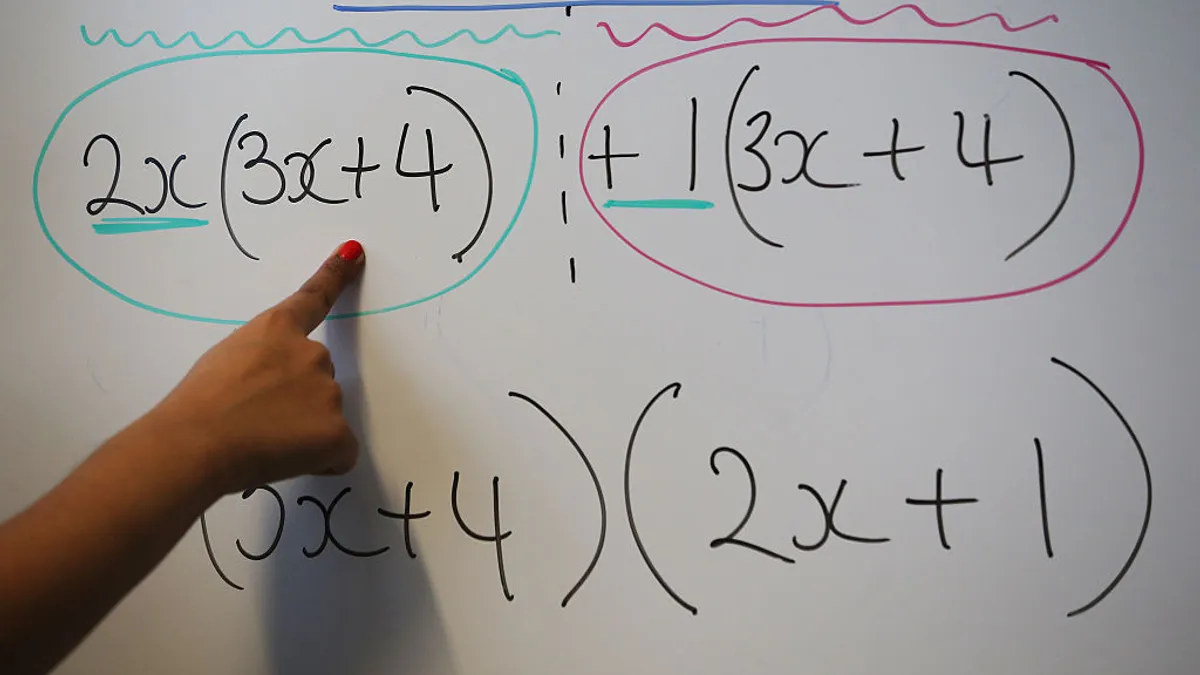Eileen Slaton has more than 25 years of experience as a math educator at the K-12 and higher ed level. She currently teaches at Huston-Tillotson University, an HBCU located in Austin, Texas, and is a Public Voices Fellow with The OpEd Project, which seeks to expand the diversity of voice in public conversations.
FREEZE! DON’T MOVE! You are now in the body of a young person sitting in math class with a full page of math problems staring at you and a pencil waiting for you to pick it up.
You are experiencing the frozen state of mind students often describe as fear of math. In fact, it is a fear of failure. When students are redirected to understand this, they are presented with an opportunity.
Our K-16 school system doesn’t encourage failure. The migration toward constant evaluation has trapped educators and students in a mindset where failure is not an option, leading to mental health issues such as anxiety and stalling progress.
A recent survey of 38,000 employee and leaders from 21 countries shows the concern for making wrong decisions is stifling decision making and hindering innovation in the workplace. We have forgotten that failure can be an opportunity, a redirection, an instiller of courage.
Failing gives the student a chance to rethink and come back stronger with different reasoning. When students try and fail, they learn how important it is to persevere. Students learn to love themselves through failure. These important developmental qualities are lost on our youth if we continue to allow students to recast their fear of failure as a fear of math.
Educators need to find a way to make space for failure. At Boise State, for example, the university enacted grade-forgiveness policies, allowing students to literally learn through failing. The change led to a 10% increase in STEM enrollment and 25% increase in STEM graduates. Boise State also builds failure into its model by giving students the choice to repeat entire courses for better understanding.
Flexible deadlines are another policy schools can adopt to encourage learning through failure and give students the courage to try. At Huston-Tillotson University in Austin, Texas, where I teach math, implementing this practice of flexible deadlines for students resulted in a 22% increase in homework completion and 13% increase in passing rates in my respective entry-level and upper-level courses.
Instead of focusing on the advantages of failure, since as early as the 1950s, we have been inundated with research on the plague of “math anxiety.” In the U.S., about 93% of people reportedly experienced some level of math fear. Only 2 in 10 students exhibit confidence in math without fear. From a teaching perspective, 67% of teachers told Ed Week researchers that one of the challenges facing their students is fear of math.
Math phobia may well exist, but my 25 years in the math classroom suggest the crisis students experience looking at that math problem is far more about fear of failure. The demonstrable results after policies like flexible deadlines and grade forgiveness are implemented show that students can be taught to adopt a new mindset and embrace failure—and that this leads, perhaps counterintuitively, to more success in math.
In a study combining primary, secondary, and undergraduate aged students from North American, Europe and Asia, researchers found students learn much better in STEM fields when given the opportunity to solve problems prior to instruction. Students tripled improvement in learning outcomes when allowed the experience of productive failure.
As educators, we need to redirect the research and conversation away from math fear and toward encouraging failure in the classroom. We must work to change the negative outlook on failure and return to educator John Dewey’s idea that failure is instructive. As leaders in schools, we can alter our leadership style to encourage innovative decision making and push our students and each other to engage and learn without fear of failure.
By adjusting our pedagogy to emphasize that failure is instructive, we can design our classrooms to encourage failure. We can also help students conquer their fear of failure by using mental wellness strategies to manage fear of failure, such as roleplay.
Embarking on a new academic year provides the opportunity to share how failure is the best teaching tool. In fact, failure is necessary in life. When we encourage learning through failure in more classrooms, we help eliminate fear of math as a roadblock for more students.











